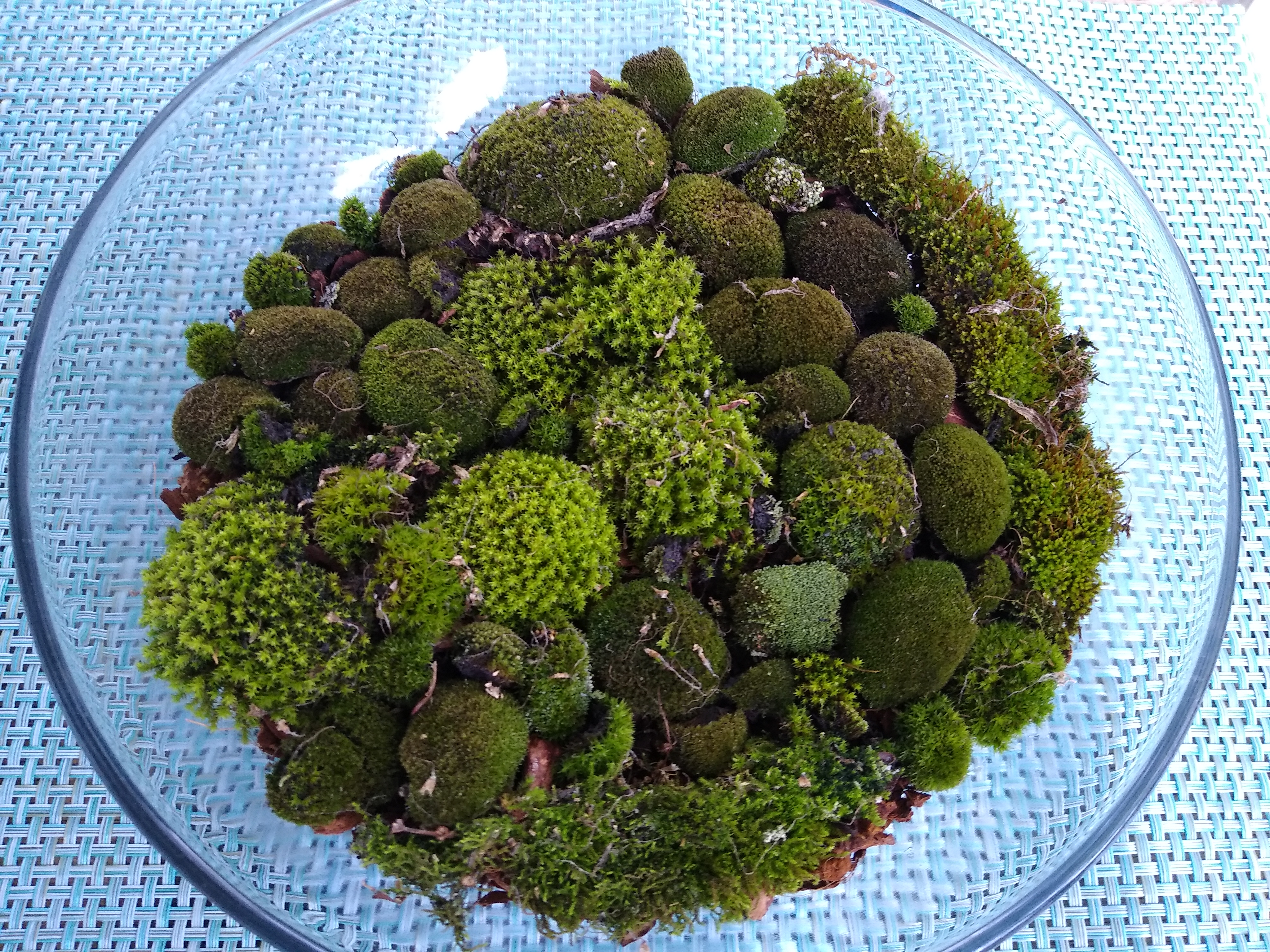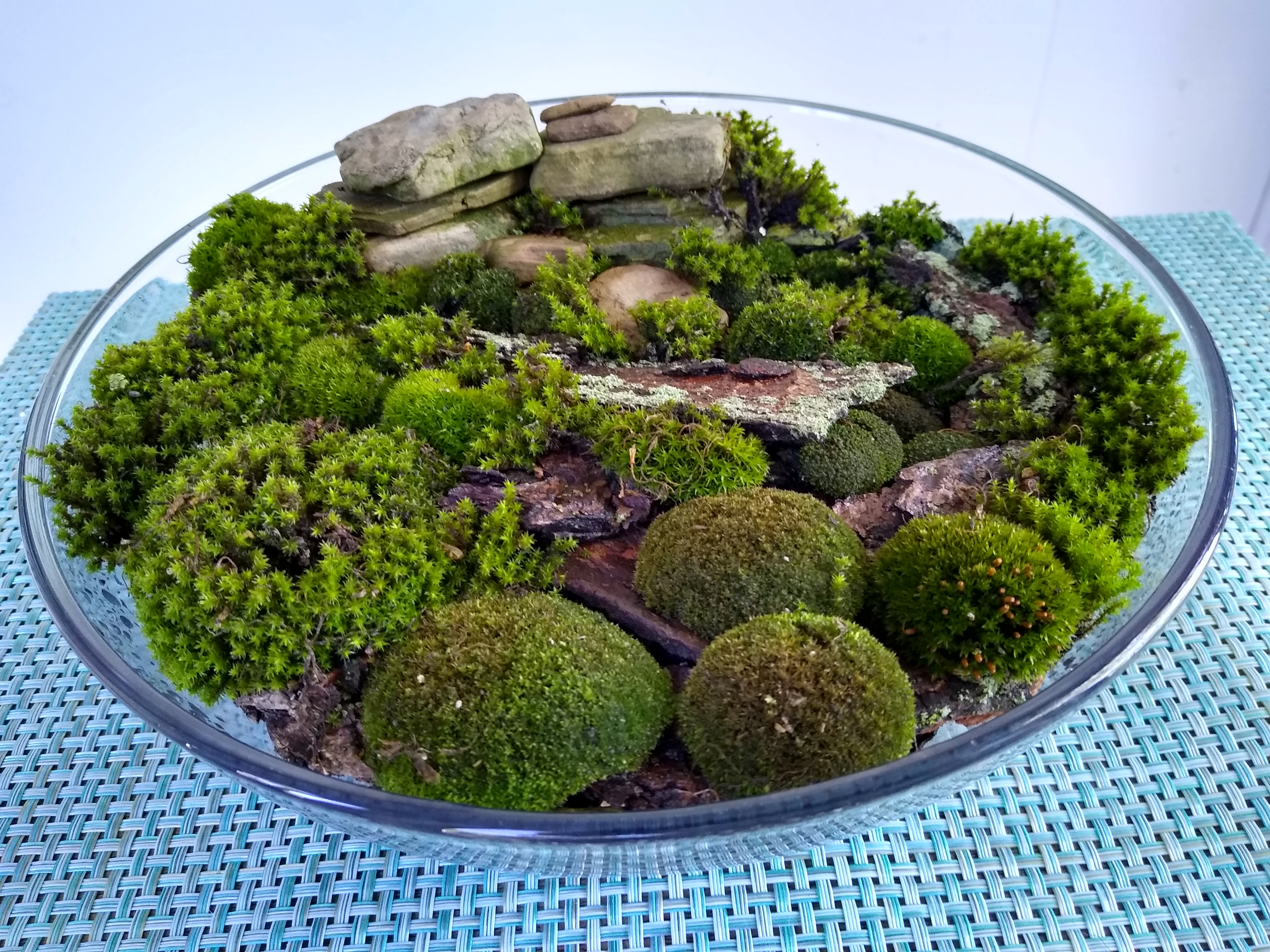Moss gardens don’t have to be an expensive endeavor, if you live in a temperate climate, you can often find what you need in your own yard.
All you need are some pebbles on the bottom for drainage, some pieces of bark on which the moss can anchor itself, maybe a few decorative rocks, and a few moss specimens. Look around the base of tree trunks for moss specimens (the old adage “moss only grows on the north side of a tree” isn’t exact, but it’s a good place to start).
When you collect the moss specimens, be sure to gather them with a thin layer of the soil they are growing in.
Don’t pull bark chips from a live tree, but collect them from the ground, or from dead trees. If you are lucky enough to have a “shag bark” tree such as a silver-leaf maple (very commonly used in landscaping because they grow quickly) collecting bark chips will be easy, since you are probably raking them up from the ground around the tree regularly.
All of the specimens in these moss gardens were collected from the roof of my house, which is shaded by trees for much of the day. Moss growth can damage the shingles on the roof, so they needed to be removed, so making a garden with them was a win/win situation.

If you don’t have moss in your yard, see what local laws are for collecting wild specimens. If it is allowed, never take more than a small sample of a wild moss specimen, as it can be very slow growing. If there is a dinner plate-sized moss specimen, don’t take more and one or two small coin-sized samples. If you collect two, do so from different parts of the larger specimen.
Then, when you put it together, let your imagination go wild.
First, put a layer of pebbles in the bottom of the container. You can use ones from your yard, or if you are using a glass container for the moss garden where the pebbles will be visible, you can buy decorative pebbles from a garden or home improvement store. Arrange the pebbles in an even layer of pebbles about an inch deep. If you plan to have decorative rocks that rise above the bark chips and moss, add these next. You don’t have to complete the rock display at this point, just give yourself a base of rock to which you can add more rocks later. Next, add the bark chips. I like to stick one or two small pieces down into the pebbles where they will touch the water in the drainage pebbles, and act as a “wick” to draw water upward into the rest of the bark. Once you are satisfied with the bark arrangement, begin adding the moss specimens. I like to leave at least a couple bits of bark exposed. If you find bits of bark that are already colonized by lichen, these add an interesting contrast to the moss and decorative rocks.

Try to keep enough water in the bottom of your moss garden that most of the drainage pebbles in the bottom are wet, but not so much that the wood chips are immersed. If the bottom layer of bark is constantly immersed in the drainage water, you are likely to have problems with mold growth. There should be no more than a couple small pieces of bark extending down into the drainage water.
Buy an empty spray bottle to wet the moss regularly, at least until it has a chance to re-root itself to the bark. I usually wet down a new moss garden in the morning and evening.
If you use a container with a lid, don’t seal it up tight just yet. Leave space for air to circulate in and out of the container until everything gets settled in, or you are likely to get mold growth. If you do see some of the specimens start to get moldy, remove them and look under where they were to see if the drainage water is so high that it’s in contact with the specimens. If it is, you will need to drain a bit out. A “turkey baster” bulb can be used to suction out excess drainage water.
Now get out there and explore your yard for moss!